We get it. Flooding people with a bunch of ads is an easy way to get your brand out there, but trust us, that road leads to bad news — you'll tick off your audience and tank engagement over time unless you’ve got tools to mitigate diminishing returns.
In this guide, we'll break down why excessively serving the same ad content to your audience is bad news and how to keep your brand visible without inducing ad fatigue. The goal is to drive conversions and accelerate opportunities through relevance, not driving people crazy with repetition.
Why Ad Overkill Backfires
Blasting people with a relentless avalanche of repetitive ads can seriously hurt your results:
- Diminishing Returns: Research consistently shows that ad effectiveness takes a nosedive after a certain frequency. Around six exposures is the tipping point where people start tuning out due to familiarity and ad fatigue. After that, you get severely declining returns as customers develop "ad blindness."
- Annoyance Factor: No one likes feeling bombarded. Too many repeat ads make folks feel like you're invading their space. Studies show that most consumers think repetitive ads reflect poorly on brands. This breeds bad vibes and damages perception.
- Declining Engagement: On top of irritation, overexposure numbs audiences. Ad engagement metrics like click-through rates plummet as people start auto-ignoring overly familiar ads. Ad fatigue makes response rates sink as customers develop immunity to your message. That’s why you shouldn’t overlook ad set A/B tests to segment the target audience wisely.
- Wasted Budget: Targeting the same people over and over with recurring ads gives you minimal extra impact. This budget would be better allocated where you'll get higher returns.
- Poor Targeting: Broad targeting that creates repetition indicates you need to rethink customer segmentation.
The takeaway? Endless repetition does not equal credibility. You must optimize frequency through audience segmentation, campaign configuration, and messaging relevance.
Smart Tactics to Reduce Ad Fatigue
Rather than just hammering the same people with the same content repeatedly, use these precision targeting tips:
- Set frequency caps in campaign settings to avoid overexposure. Studies show performance declines after 2-3 exposures, so keep it below this.
- Test new audience segments carefully without drifting too far from proven best-fit demographics. Straying too far waters down relevance.
- Change up your creative, copy, formats, and placements continuously to keep it fresh. Even minor graphic tweaks can re-engage viewers and prevent ad fatigue.
- Spread ads across multiple platforms and channels — don't just dump all spending into one place. Diversify to reduce repetition risks.
- Give peeps a break, then remarket later when they've reset. Letting audiences breathe helps regain attention when ad fatigue surfaces.
- Closely track engagement metrics— if they drop, you may be annoying people. Use this intel to identify and respond to frequency issues.
- Focus budget on consistently high-ROI platforms, and nimbly shift if you see fatigue arising in a channel. Stay agile.
Using these techniques shows you respect people's time while also keeping your brand top of your mind. It's all about finding that optimal balance between visibility and value. Don't be a pest — be a welcome presence.
Why Expanding Your Audience is Risky
Some marketers try to reduce high frequency by dramatically expanding their audience targeting. But massively widening your net can seriously dilute your strategy:
- You'll water down your core messaging by straying too far from proven customer motivations and buying factors. Keep it aligned.
- Super broad targeting gives platforms leeway to misalign placements as their algorithms grasp for relevance. Keep a tight targeting focus.
- You'll waste spending reaching huge swaths of low-value pockets of people with low intent. Bye bye, ROI!
- Vanity metrics like reach and impressions may spike, but key conversion metrics will likely plummet. Stay focused on the metrics that matter.
Instead of chasing reach, invest that time into truly understanding your best-fit core audience. Refine tactics to cut through the noise, specifically with those high-intent, high-value customer segments. Stay laser-focused on quality over quantity.
The Wrap Up
The moral of the story? Mindless repetition sucks. It damages perception, torpedoes engagement, and wastes budget. Sustainable returns come from strategically engaging your audience with relevant messaging and well-configured campaigns. Do that, and you'll build lasting returns and relationships without a hint of ad fatigue.
So tune out the hype around spray-and-pray ads. Instead, tune into what makes your audience tick. Meet their needs, don't bombard their feeds. Show you value their time and attention. That's how you rock those long-term conversions.
Try Primer to Refine Your Targeting and Avoid Ad Fatigue Continuously
Primer provides flexible data orchestration capabilities:
- Source and merge data points from multiple trusted data sources available to tailor ad messaging that resonates with people’s intents.
- Make your audience segments as tight as needed by applying hundreds of Primer filters.
- Activate your custom audiences on multiple ad platforms to define which channel forms a sustained pipeline.
Our experts are ready to take you on a personalized onboarding tour – request a Primer live demo now!








